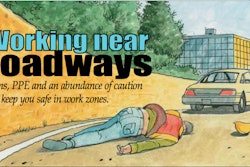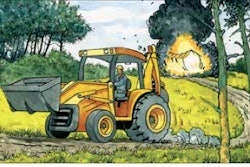When it comes to spec’ing a mower, don’t neglect these commonly overlooked factors.
If you’re shopping for a professional-grade mower, you probably already researched the obvious factors such as mower manufacturer, engine manufacturer, horsepower and price. But where do you go from there? The best place to start is evaluating your clients’ properties.
“Honestly there are tons of things to take into account, but the most important are size of the properties and obstacles,” says Darren Hughes, marketing and development manager, Dixie Chopper. “Every mower is designed to cut grass – it’s just a matter of how fast and how well you want to do it,” he adds. If you maintain large lots and sports fields, consider sheer speed (mph) that will get the job done more quickly. Just make certain the mower can cut and discharge the grass while traveling at that top speed.
Randy Harris, senior marketing manager, The Toro Company, says residential areas, especially those limited by pedestrian gates, typically require smaller, lighter weight machines. “The key is to pick a deck size that will maximize cutting performance and minimize time spent on the jobsite,” he says. He suggests landscapers who maintain smaller properties with limited access consider purchasing a stand-on mower, which offers the speed of a zero-turn rider with the compact size and maneuverability of a mid-size walk-behind mower. Lighter machines will also cause less damage when mowing on damp days or in low areas that remain soft, so check the model’s weight.
“We are a huge believer in demo-ing every machine you are thinking of purchasing,” Hughes says. It might sound elementary, but Hughes suggests your demo should involve cutting some grass, not just driving the mower around a dealer parking lot. If they don’t have a model they’ll allow you to get dirty, visit a different dealer. Hughes says Dixie Choppers’ operator-controlled discharge chute, a heavy frame, and easy access to moving parts “without taking the whole machine apart” are big selling points with their customers. “Demo the product for cutting speed and discharge in the grass, not on the pavement,” Hughes says. “Any mower looks good on pavement.” He says you’ll naturally want to consider how the machine handles around obstacles. Any zero-turn mower should excel in this department, but there are subtle differences in the sensitivity of the steering. There will always be a learning curve involved with getting accustomed to a unit different than the model you’ve been operating, but some mowers will probably just feel right for you.
Harris agrees a test run is essential when shopping for a mower. “The gauge of steel, depth of deck, protective reinforcement and spindle size and construction can be easily examined and compared on the dealership floor,” he says “However, the only way to really determine quality of cut and handling performance is to demo the mower on some of your most challenging properties. If possible, use the mower in heavy, wet grass to really understand whether the mower provides an improvement over the machine you’re currently running.” He emphasizes landscape professionals should consider deck construction, how well the deck cuts and processes grass, and how well the mower handles hills and turns.
Mark Pavcik, manager, professional mowing equipment product line marketing, John Deere Agriculture & Turf Division, says the deck is the first place to start looking. “Deck gauge is an important factor,” he says “The deck front edge and trim side should be reinforced to keep its shape and maintain a good quality of cut. Find out how heavy the deck suspension linkage is to keep this heavy deck level and well supported over time. The machine should be reinforced in the front in case operators hit curbs and run into things; and same with the rear in case they back into things.”
Other specs Pavcik suggests are important include run-flat caster wheel tires to prevent downtime from flat tires, two-stage air cleaners to keep the engine running clean with fewer stops to service the air cleaner, absence of excess linkages, and well-routed electrical wire harnesses and hoses that won’t get crimped or rub on other components and wear out over time. Even details such as expendable mower blades should not be overlooked. “Thick mower blades means they will get several opportunities to sharpen them before having to replace them,” he says.












